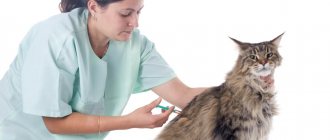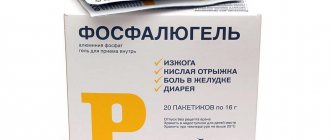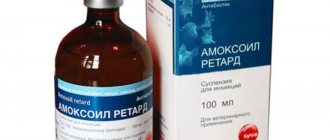One of the most popular and effective drugs for cats, Zantac, copes well with a variety of gastric disorders, and the main indications for its use are peptic ulcers of the stomach and duodenum, treatment and prevention of peptic ulcers due to postoperative stress, as well as the prevention of gastric bleeding.
The price of such a product ranges from 145 to 180 rubles.
pharmachologic effect
Pets differ from people in having a weaker digestive system. Despite its lower susceptibility to various viral and bacterial diseases, its imperfection manifests itself in frequent gastric imbalance and other disorders. Systematic digestive disorders require an immediate response from the owners, most often with the help of a veterinarian.
Zantac is a drug from the category of second-generation antiulcer drugs, which is used to successfully treat a whole list of gastric disorders.
Its action is based on reducing the production of excess gastric juice , which is carried out by blocking H2 histamine receptors. This effect is especially important for peptic ulcers and other digestive problems, which are accompanied by increased production of gastric juice.
Zantac is quickly absorbed into the stomach walls and accumulates in cellular structures. The maximum concentration of the drug in the body is observed fifteen minutes after application. Use with food is permissible, since it does not affect the absorption of the main components of the drug.
Excretion from the body is carried out through the kidneys while maintaining the original state, but the drug is partially metabolized in the liver.
Ranitidine overdose in dogs
Ranitidine overdose in dogs can occur if the dosage is incorrect or is not administered correctly. In these cases, symptoms of overdose are observed, which include:
- Tremor
- Get swoon
- Vomit
- Tachypnea (rapid breathing)
If our dog has ingested a large amount of ranitidine or has been given too high a dose , we should consult a veterinarian. They may be able to administer a product to counteract the effects of Zantac or even perform a gastric pump to eliminate the medication before more damage occurs...
Instructions for use
Zantac for cats can be used in three ways:
- intravenously;
- intramuscularly;
- orally.
When treating a pet, it is worth remembering the characteristics of its body - accelerated metabolic process , low weight and high body temperature. It is these factors that contribute to the faster absorption of some drugs, and they are important to consider when prescribing dosage.
Zantac injections are administered intravenously if results are required as quickly as possible. This method is quite painful, but most effective. An intramuscular injection of the drug is much easier for animals to tolerate and is the traditional method of administration.
In some cases, well-crushed tablets are used and mixed with food. The drug is used twice a day, unless otherwise prescribed by a veterinarian.
Composition and release form
The main active ingredient in Zantac is the traditional ranitidine. It is included in the list of essential products used for peptic ulcers. It is ranitidine that is responsible for reducing the secretion of gastric juice and relieving pain.
Today, there are three main forms of release of the drug:
- injection solution in ampoules;
- water-soluble tablets, 150 mg of active ingredient;
- hard shell tablets, 150 mg or 300 mg of active ingredient.
Veterinarians most often use an injection solution and hard-shell tablets. The water-soluble form of the drug is mainly used to treat ulcers in humans. In addition to ranitidine, the Zantac injection solution includes auxiliary components: sodium chloride, sodium dihydrogen orthophosphate, anhydrous potassium dihydrogen orthophosphate, liquid nitrogen and prepared water.
The tablets also contain titanium dioxide, magnesium stearate, croscarmellose sodium, cellulose hydroxide and triacetin.
Auxiliary components do not have a negative effect on the body, but are required to consolidate and increase the duration of action of the main active ingredient.
Pharmacodynamics and pharmacokinetics
Pharmacodynamics
H2-histamine receptor inhibitor. of pepsin and hydrochloric acid in it . Helps increase the alkalinity of gastric contents, which causes a weakening of pepsin . The duration of action of ranitidine after a single dose reaches 12 hours.
The microorganism Helicobacter pylori is detected in approximately 80-95% of patients with and duodenal ulcers When ranitidine with Metronidazole and Amoxicillin, complete eradication of this microorganism is observed in 90% of cases. This combination of drugs greatly reduces the frequency and severity of exacerbations of peptic ulcer disease.
Pharmacokinetics
When taken internally, bioavailability is about 50%. The highest concentration occurs after three hours. After intramuscular administration, the highest concentration is recorded within 15 minutes. Plasma protein binding is less than 15%. Penetrates the placenta and is evacuated during lactation. Doesn't cross the blood-brain barrier well.
The metabolism of ranitidine occurs with the formation of small amounts of desmethylranitidine, S-oxide, N-oxide and furoic acid. The half-life reaches 3 hours. After taking the tablets, up to 70% of the drug is excreted in the urine, another 26% through the intestines. After intravenous administration, 93% of the drug is excreted by the kidneys and 5% through the intestines.
Dosage calculation
Before you start treating your pet, it is important to carefully study the instructions for Zantac for cats. The correct dosage is always based on the weight of the animal . In the treatment of gastrointestinal diseases (including during acute periods), the following calculation formula is used: per 1 kg of animal weight, from 1 to 3 milligrams of the drug in the form of a tablet and from 1 to 2 milligrams of the drug in the form of an injection solution are used.
However, you should not treat the animal yourself without contacting a veterinarian. Only a doctor can calculate the required amount of the drug, having thoroughly studied the whole situation. In addition, self-administration of Zantac can lead to an overdose and side effects.
What is ranitidine used for???
Ranitidine is known as an H2 blocker, which means it inhibits histamine receptors to reduce the secretion of gastric acid in the stomach. This stomach acid causes reflux, gastritis, inflammation and other gastrointestinal problems. By regulating the level of stomach acid in your stomach, you can counteract these problems and minimize the risk of ulcers. Ranitidine is also used to treat the side effects of certain medications. Like NSAIDs , which can negatively affect the stomach lining in dogs, especially if used over a long period.
Unfortunately, many of the symptoms associated with these stomach problems do not appear until the condition has developed. Symptoms such as diarrhea or vomiting may subsequently appear. Veterinarians prescribe medications such as Zantac to reduce the damage that these various pathologies can cause as well as reduce symptoms.
Precautionary measures
There is no designated list of contraindications for the use of Zantac, since it is mainly used to treat human stomach diseases.
However, before treating a pet, it is important to make sure that there is no hypersensitivity to the components of the drug, liver disease, renal failure and acute forms of other diseases.
If these points are ignored, the use of the drug can become dangerous and lead to complications and even death.
That is why you should not neglect a visit to the veterinarian to establish an accurate diagnosis, examine the animal and prescribe the exact dosage. In addition, the drug is not used during pregnancy and lactation.
Storage conditions
The drug "Zantac" should be stored in a dry place, protected from light, at a temperature not exceeding 33 degrees. If storage conditions are met, the injection solution is stored for 3 years, and hard-coated tablets for 5 years. An opened ampoule of the drug should be used immediately.
Zantac for dogs
Not only cats suffer from diseases of the digestive system. Dogs are also susceptible to stomach and duodenal ulcers, stomach upsets and indigestion. These diseases develop due to poor nutrition, stress, poisoning and the use of aggressive medications.
The dosage of the drug for treating dogs is the same as for cats: 1-2 mg per 1 kg of pet’s weight or 0.1 ml of injection solution per 1 kg of weight. One tablet is designed for a dog weighing from 50 to 75 kilograms.
The medicine should not be used to treat small puppies or pregnant or lactating females. Side effects include diarrhea, constipation, nausea and vomiting, heart rhythm disturbances and decreased blood pressure, drowsiness and lethargy, general irritability and aggression of the animal during the treatment period.
Methods of administration of the drug for dogs: intravenously, intramuscularly and orally. The dosage, frequency of use and total duration of treatment are prescribed only by a veterinarian. Most often, the drug is administered intravenously, twice a day. Moreover, intravenous administration requires a long time - at least two minutes per ampoule. You should not self-medicate, as there is a high risk of allergic reactions and side effects.
Side effects of ranitidine for dogs
Although ranitidine does not usually cause side effects, the following may sometimes occur:
- Vomit
- Diarrhea
- Arrhythmia (irregular heartbeat)
- Nap
- Thrombocytopenia (decreased number of platelets in the blood)
- Fast breathing
- Tremor
- Scabies
- Abdominal pain
- Headache
Not all the side effects of Zantac and other ranitidine drugs are easily frightened by our dog. It is important to monitor how you react to the prescription and ensure there are no changes in your health or well-being. If our dog shows any of these side effects, then we should take them to the vet. You should also tell your veterinarian if you are taking any other medications that may react poorly to ranitidine...
Although it is rare, some dogs may be allergic to ranitidine. If this is the case, they may suffer from anaphylactic shock. If this happens, it is a veterinary emergency and you should take them to a professional as soon as possible. Although the dog should not be put on ranitidine again, he will still have to deal with stomach problems. The veterinarian will choose a suitable alternative.
Generally, there are few side effects of ranitidine in dogs and it is considered important by medicine . However, it has not been shown to be as good as other drugs at suppressing stomach acid production. In these cases, drugs such as omeprazole and pantroprazole have proven to be more effective...
Reviews about the drug
I am a veterinarian with extensive experience (more than 20 years). I can say with confidence that no analogue of Zantac copes with the problem so quickly and with virtually no side effects. Moreover, the drug can really be used at different stages of the disease and not only for cats.
This drug literally saved our cat!
Our Murka suffered from stomach ulcers for quite a long time until our veterinarian recommended Zantac. In just two days the bleeding stopped and I had a good appetite. Olga, owner of a Persian cat
Indications for use
- Reflux esophagitis.
- Ulcers of the stomach (benign) and duodenum .
- Prevention of duodenal ulcers caused by the use of non-steroidal anti-inflammatory drugs or infection with the bacterium Helicobacter pylori.
- Zollinger-Ellison syndrome.
- Gastroesophageal reflux.
- Postoperative ulcers.
- Treatment of pain due to gastroesophageal reflux.
- Chronic dyspepsia , complicated by epigastric pain associated with food intake, but not related to the above conditions.
- Prevention of recurrent bleeding from peptic ulcers.
- Prevention of stress-type stomach ulcers in seriously ill patients.
- Prevention of Mendelssohn's syndrome.











